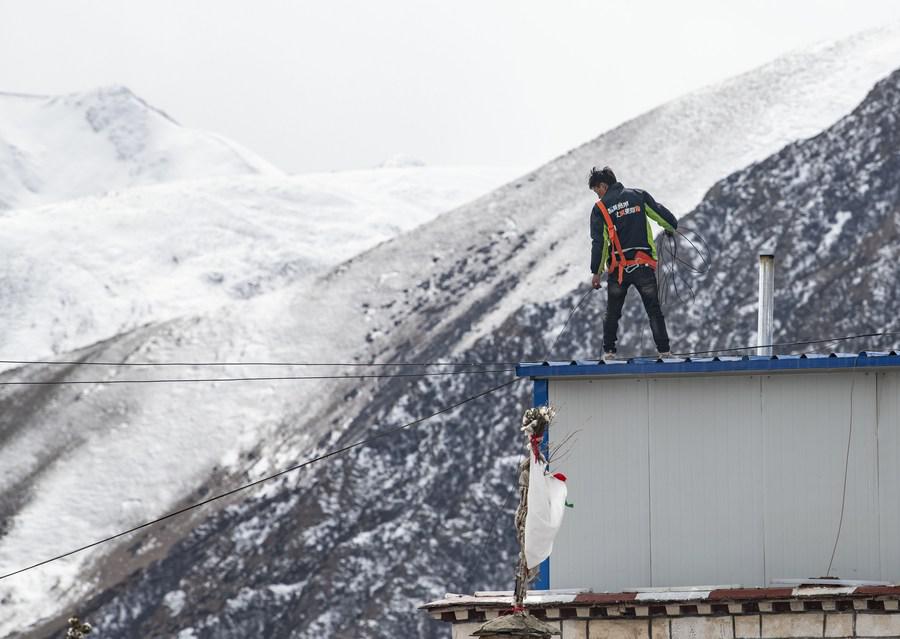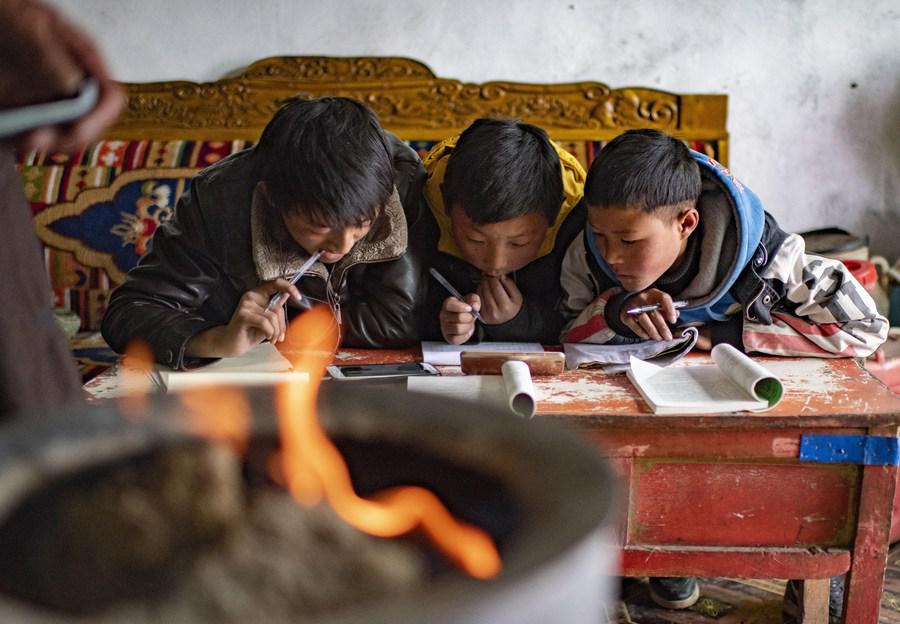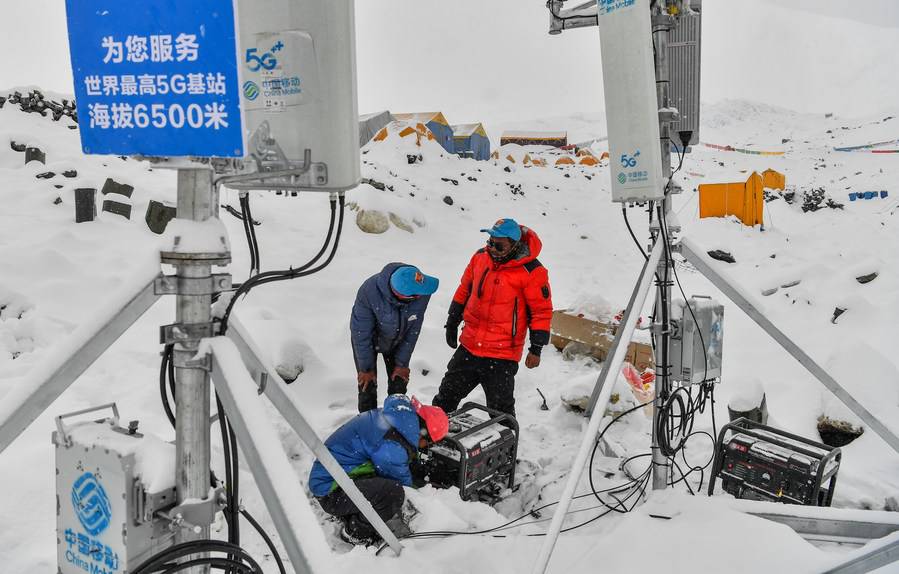

With 99 percent of all villages in Tibet covered by 4G, fiber-optics internet, people are better connected than ever before. Even the world's highest peak has internet coverage!
LHASA, Dec. 30 (Xinhua) -- After an online interview from the comfort of her own home in Tibet Autonomous Region, southwest China, Cering Lagyai got a job offer from the company more than 2,200 kilometers away in north China.
"I used to write letters to my friends outside Tibet years ago when I was in high school. It would take a month to receive the reply letter," said Cering from Kurtang Village, Nyingchi. "Now that the village has broadband, it is easy to stay in touch with my friends via video chat."

A worker installs broadband network in Bagar Village in Damxung County, southwest China's Tibet Autonomous Region, March 6, 2020. (Xinhua/Sun Fei)
Today, 5,417 villages, or 99 percent of all villages in the region, have 4G network coverage, and 5,439 villages have fiber-optic network connections.

Students take an online class at home in a village in Damxung County, southwest China's Tibet Autonomous Region, March 6, 2020. (Xinhua/Purbu Zhaxi)
Aided by broadband and 4G coverage, mobile Internet is transforming the way of life on the plateau. E-commerce is booming, generating new avenues of income for Tibetans.
During the low season, Qamba Zhoima from Qonggyai County puts down her hoe and picks up her cellphone to livestream barley and homemade milk curd on China’s e-commerce platforms.
"Livestreaming helps my products reach a bigger market at a better price. I can earn more money," said the 40-year-old farmer.

Qime Cering (Left), chief of Damxung County, livestreams to promote local products on an e-commerce platform on Aug. 20, 2020. (Xinhua/Wang Zehao)
The connection between the "roof of the world" and other parts of the globe is stronger than ever thanks to the nearly 1,000 5G base stations that had been built across the region by June.

A tour guide speaks during a livestreaming tour in the Potala Palace, a UNESCO world heritage site, in Lhasa, southwest China's Tibet Autonomous Region, March 1, 2020. (Xinhua/Jigme Dorje)
Even the world’s highest peak now has 5G signal after the world’s highest-altitude 5G base station, built at an altitude of 6,500 meters, started operation on April 30 at the advance camp of Mount Qomolangma.

Staff members of China Mobile test the signals of the 5G base station built at an altitude of 6,500 meters at the advance camp of Mount Qomolangma in southwest China's Tibet Autonomous Region on May 21, 2020. (Xinhua/Jigme Dorje)
Faster network connections have also helped realize remote medical consultations, bringing the plateau more medical resources from developed regions of the country.
On Dec. 11, Tibet’s first telemedicine consultation powered by 5G technology brought over 10 medical experts from the People's Hospital of Lhasa and the Beijing Friendship Hospital together to discuss a severe pancreatitis case in Lhasa. The team of doctors worked together to review the diagnosis, treatment and future therapies completely via video link.
Lhasa hospital president Ren Yi, who attended the consultation, described the discussion between doctors situated 3,000 km apart as "high-quality telemedicine," and lauded the high definition visuals and smooth image quality as better than traditional telemedicine.
At least 1,000 more 5G base stations will have been built by the end of this year to cover all the administration seat areas of all seven cities and prefectures in Tibet, according to a regional plan.

 Award-winning photos show poverty reduction achievements in NE China's Jilin province
Award-winning photos show poverty reduction achievements in NE China's Jilin province People dance to greet advent of New Year in Ameiqituo Town, Guizhou
People dance to greet advent of New Year in Ameiqituo Town, Guizhou Fire brigade in Shanghai holds group wedding
Fire brigade in Shanghai holds group wedding Tourists enjoy ice sculptures in Datan Town, north China
Tourists enjoy ice sculptures in Datan Town, north China Sunset scenery of Dayan Pagoda in Xi'an
Sunset scenery of Dayan Pagoda in Xi'an Tourists have fun at scenic spot in Nanlong Town, NW China
Tourists have fun at scenic spot in Nanlong Town, NW China Harbin attracts tourists by making best use of ice in winter
Harbin attracts tourists by making best use of ice in winter In pics: FIS Alpine Ski Women's World Cup Slalom
In pics: FIS Alpine Ski Women's World Cup Slalom Black-necked cranes rest at reservoir in Lhunzhub County, Lhasa
Black-necked cranes rest at reservoir in Lhunzhub County, Lhasa China's FAST telescope will be available to foreign scientists in April
China's FAST telescope will be available to foreign scientists in April